Mitsumata
The Sunday Paper #113, June 26, 2016
Sponsored Paper of the Week: Handmade Mitsumata Iron Oxide Pink and Grey from the Japanese Paper Place
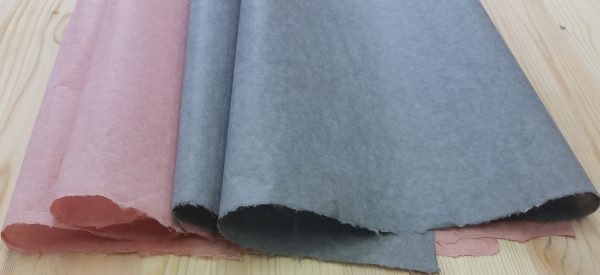
These handmade mitsumata papers are dyed with iron oxide, and to produce the grey color, mixed with sumi (soot). Added to the Japanese Paper Place (JPP) inventory in just the last 2 years, these papers are typical of the very special finds they discover or commission annually.
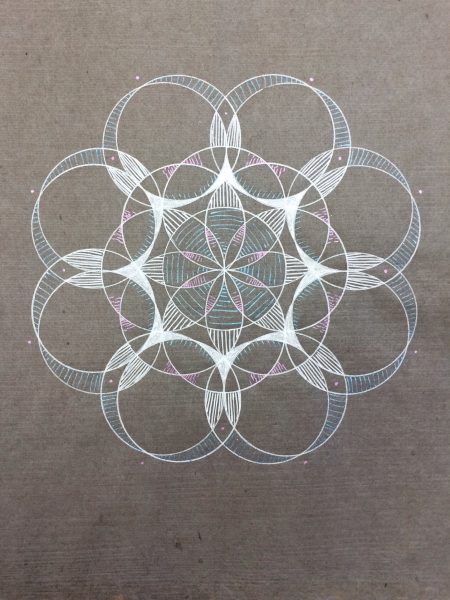
Gel pen drawing by Stacey Sproule on mitsumata iron oxide grey.
Japanese paper made from mitsumata is thought to be the “feminine” of the three traditional papermaking fibres: soft to the touch, malleable, and dense (it is less translucent than kozo or gampi), with a subtle elegant gloss and a natural creamy color. In Japan, mitsumata paper is favored for brush calligraphy, backing gold leaf, and until recently for making paper currency. But in the hands of western creatives, these special characteristics call out in other ways: to be touched in a book; drawn on with gel pens; stitched into jewelry; or just carried around in a pocket when a gentle touch is needed.
The Japanese Paper Place in Toronto has been devoted to selling papers and supplies from Japan exclusively since 1978. In the mix of hundreds of kinds of washi, they stock a wide range of mitsumata paper, many of which have aged like good cheese or wine to a peak of ripeness which never wanes.
—————–––––———————————————————————————————–––––––––
In the Studio:
I’m just back from my Florida vacation and am looking forward to getting back into the studio this week! In the meantime, I spent a few hours working on the 2017 Twelve Months of Paper Calendar. Here’s a sneak peak at the first month’s project (December 2016).
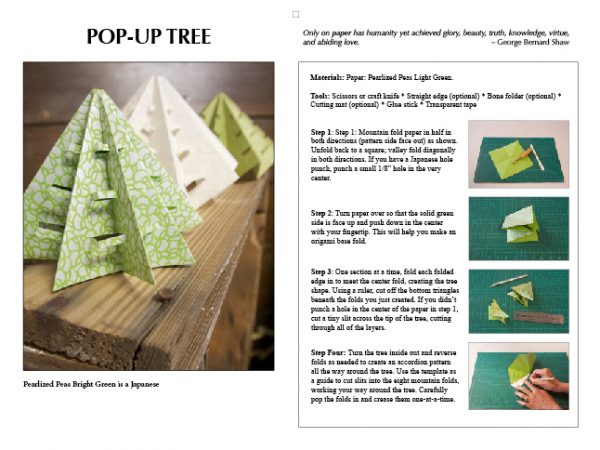
- My biannual Paper Sale starts next Sunday. Read all about it in The Sunday Paper on July 3rd!
- I’m heading to Northern Iowa next week! Care to make plant papers there with me?
—————–––––———————————————————————————————–––––––––
Better late than never, right? I co-juried the Chasing Paper exhibition which is open through today in Lake Oswego, OR. Check it out if you can; it’s all about paper!
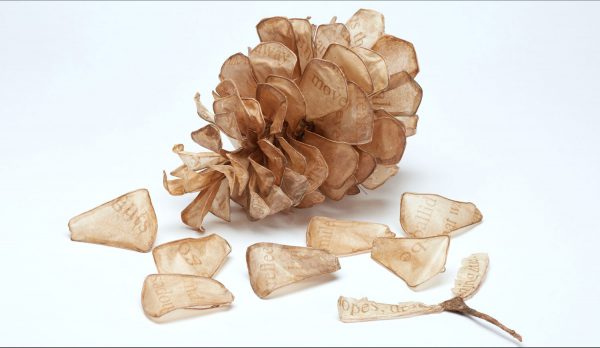
In the last 20 years of his career, the Canadian artist, Geoffrey Farmer, has made audacious paper sculptures and video installations from more than 15,000 fragments of images and sound. The “paper works,” as Farmer calls them, pull from art history and the artist’s imagination to explore contemporary culture and the images it produces.
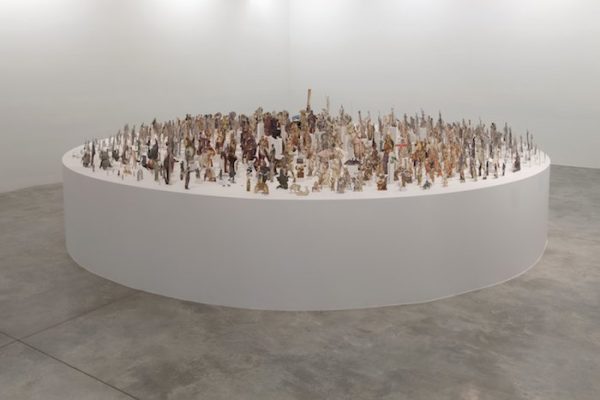
Geoffrey Farmer, Boneyard, 2013, Paper, wood, and glue Dimensions variable, Installation view, Cut nothing, cut parts, cut the whole, cut the order of time, Casey Kaplan, New York, 2014 Photo: Jean Vong Courtesy the artist and Casey Kaplan, New York © 2016 Geoffrey Farmer
Part of my family went to Cape Canaveral while we were in Florida to watch a rocket launch, among other things. And that reminded me of this origami balloon that I saw a few weeks back. The International Space Station is now testing the Bigelow Expandable Activity Module (BEAM), which swelled to its full size upon launch in May, beginning a two-year stint at the ISS. During this time, astronauts will measure how well BEAM holds up against space debris, radiation and temperature swings. Lightweight expandable habitats, made from aluminum and fabric, might provide a home for astronauts on future deep space missions. The actual module looks a bit different than the paper balloon in the rendering, but it is still cool that the space program is giving a nod to origami.
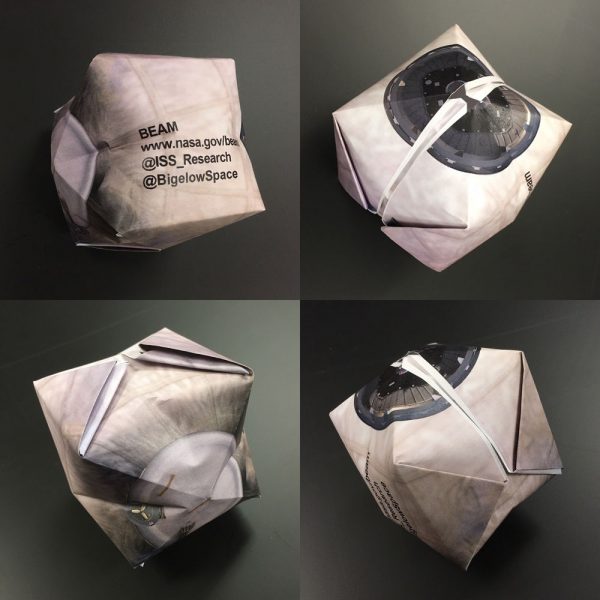
A tiny origami version of the expandable habitat NASA is testing on the International Space Station.
Here’s another exhibition that’s on my wish list, although I probably won’t make it to Pittsburgh. Alison Knowles has a big show at the Carnegie Museum of Art, and some of it showcases her work with paper. The image below pertains to her Homage to Each Red Thing participatory installation, but click over to this video to see the paper work.
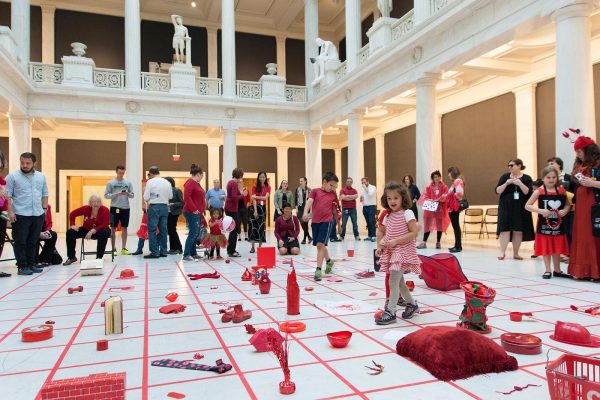
Museum visitors participate in the Celebration Red event held on Thursday, May 19, 2016 in the Hall of Sculpture. (Bryan Conley/Carnegie Museum of Art)
Here’s a lovely video about the function of a university special collections library – a profile of the University of Washington’s new conservation center.
—————–––––———————————————————————————————–––––––––
About our Sponsor: The bulk of The Japanese Paper Place’s business is wholesale – check out their resellers list here . Watch for an updated website and special vintage retail section coming in the next few weeks, and in the US, look up JPP partner Linda Marshall at Washi Arts who shares a belief in these remarkable ancient yet contemporary papers and caters to washi lovers in the States.
—————–––––———————————————————————————————–––––––––
 If you enjoyed reading The Sunday Paper today, why not sign up to get it delivered to your in-box each and every Sunday? Click here to subscribe (it’s free), and you’ll receive my nifty pop-up alphabet template as a thank you gift!
If you enjoyed reading The Sunday Paper today, why not sign up to get it delivered to your in-box each and every Sunday? Click here to subscribe (it’s free), and you’ll receive my nifty pop-up alphabet template as a thank you gift!
If you read this blog regularly, would you consider making a donation to support the research, writing, design and delivery of The Sunday Paper? Click on that cute paper button (I made that paper) to see how you can provide support.
And if you run a paper-related business, you might be interested in promoting your business in The Sunday Paper.
Thank you to those who have pledged your support, and enjoy your Sunday!

2 Comments
Helen, thanks for introducing me to the work of Geoffrey Farmer. Boneyard, 2013 is fabulous!
How did you find so many facts? I like how that you organize
everything, because it’s actually easy to read. Overall, I will recommend
this guide to everyone who is interested in that topic.